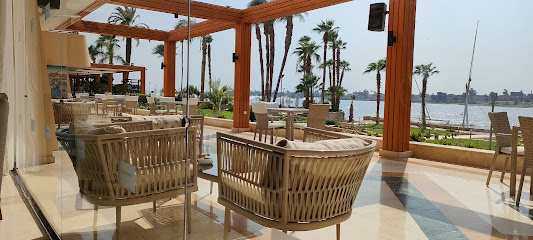
The Majestic Obelisk of Thutmose I: A Testament to Ancient Egypt
Discover the Obelisk of Thutmose I at Karnak Temple in Luxor, a stunning ancient monument showcasing Egypt's rich history and architectural brilliance.
The Obelisk of Thutmose I is a monumental masterpiece located within the Karnak Temple complex in Luxor, Egypt. This towering structure stands as a symbol of ancient Egyptian artistry and architectural prowess, captivating tourists with its sheer grandeur and historical significance. Visitors can marvel at its intricate hieroglyphs and the impressive engineering that has allowed it to withstand the test of time, making it an essential stop for anyone exploring the rich heritage of Luxor.
A brief summary to Obelisk of Thutmose I
- PM95+982, Luxor, Karnak, Luxor Governorate, EG
Local tips
- Visit early in the morning or late in the afternoon to avoid the heat and enjoy quieter moments with the monument.
- Bring a camera to capture the intricate details of the hieroglyphs and the grandeur of the obelisk.
- Consider hiring a local guide to gain deeper insights into the history and significance of the obelisk and its surroundings.
- Wear comfortable shoes, as you will be walking through the expansive Karnak Temple complex.
- Stay hydrated and carry water, especially if you plan to explore the site during the hotter months.
Getting There
-
Walking
If you are starting from the Luxor Temple, head northeast along the Corniche (the riverbank road) towards Karnak. It’s about a 3 km walk that takes approximately 30-40 minutes. Enjoy the views of the Nile as you walk. Once you reach Karnak, enter through the main entrance, and follow the signs to the Obelisk of Thutmose I, which is located within the temple complex.
-
Walking
From your hotel in the central Luxor area, head toward the main road that leads to Karnak Temple. Look for signs indicating 'Karnak Temple' and follow them. It’s approximately a 20-30 minute walk. Upon entering the Karnak Temple complex, ask for directions to the Obelisk of Thutmose I, which is prominently displayed within the temple grounds.
-
Bicycle
If you can rent a bicycle, start from the Luxor Temple, cycling along the Corniche road heading northeast. It’s a flat and scenic route of about 3 km. After reaching Karnak Temple, park your bike and enter the complex. The Obelisk of Thutmose I is located inside the temple, so follow the signs once you enter.
-
Horse-drawn carriage
For a unique experience, you can hire a horse-drawn carriage (known as a Calèche) from the Luxor Temple area. Negotiate a price with the driver and request to go to Karnak Temple. The ride will take about 15-20 minutes. Once you arrive at Karnak, pay the entrance fee and ask the staff for directions to the Obelisk of Thutmose I.
Discover more about Obelisk of Thutmose I
Iconic landmarks you can’t miss
Column of Taharqa
0.1 km
Explore the Column of Taharqa, a stunning historical landmark in Karnak, Luxor, showcasing the extraordinary artistry of ancient Egyptian architecture.
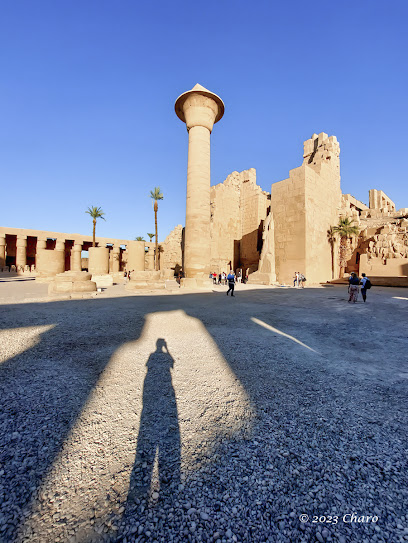
Rovine del tempio di thot
0.4 km
Explore the Temple of Thoth in Luxor, a historical landmark that unveils the mysteries of ancient Egyptian civilization.
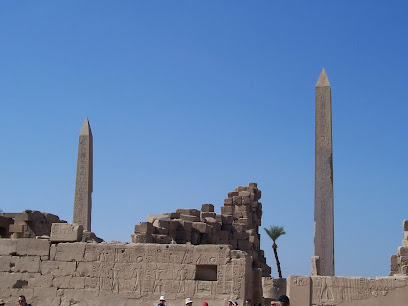
Alexbank
2.0 km
Experience the convenience of Alexbank in Luxor, your essential stop for financial services amidst the treasures of ancient Egypt.

NBE ATM - Sofitel Winter Palace Hotel 1 Luxor - فندق سوفتيل 1 الأقصر
2.2 km
Conveniently located at the Sofitel Winter Palace Hotel, NBE ATM provides 24/7 access to cash for tourists exploring the historical treasures of Luxor.

Luxor Egypt
2.5 km
Discover Luxor, Egypt - A timeless journey through the heart of ancient history and culture, where majestic temples and tombs await your exploration.
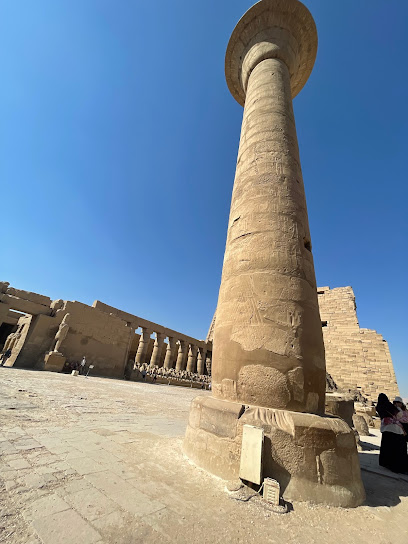
Luxor Nile Ferry - West Bank
2.7 km
Sail the historic Nile River with Luxor Nile Ferry, connecting you to the majestic wonders of Egypt's West Bank.
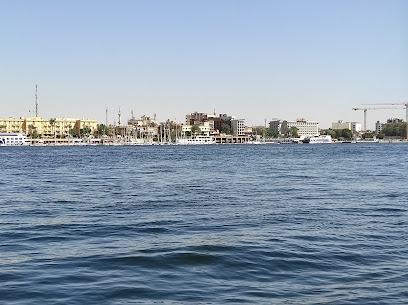
ميدان أبوالحجاج
2.8 km
Discover the vibrant heart of Luxor at Abu al-Haggag Square, where history, culture, and local life intertwine in a captivating experience.
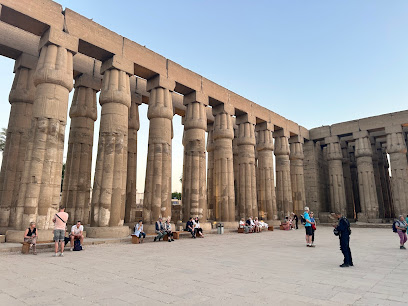
Ancient Luxor Quay
2.8 km
Explore Ancient Luxor Quay, a historical landmark along the Nile, where Egypt's ancient wonders come to life amidst stunning views and rich culture.

West Bank Private Transport Luxor
2.9 km
Explore the wonders of Luxor effortlessly with West Bank Private Transport's premium limousine and taxi services for a seamless travel experience.
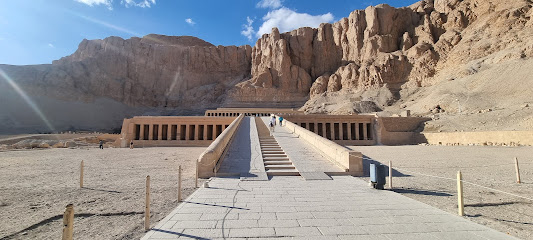
El-Gezira Hotel & Restaurant
2.9 km
Experience luxury and culture at El-Gezira Hotel & Restaurant, nestled along the Nile with exquisite dining and live music in Luxor.
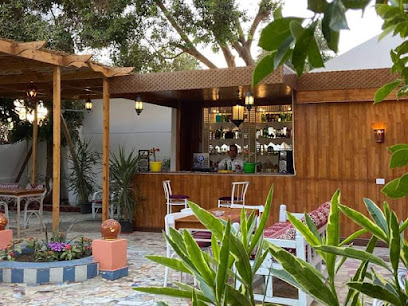
Luxor day tour to East & West Banks
3.2 km
Experience the majesty of Luxor with a captivating day tour of the East and West Banks, where ancient wonders reveal Egypt's rich history.
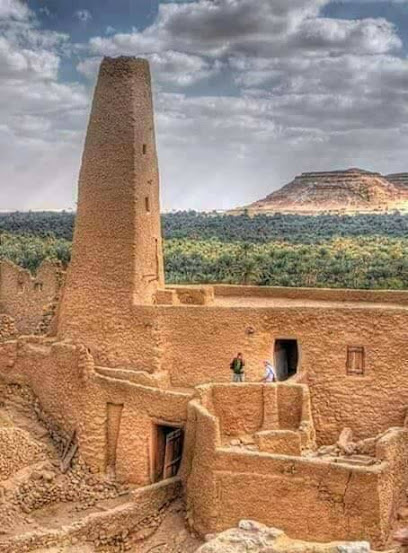
البنك الأهلي المصري فرع الاقصر
3.3 km
Discover convenience at the Egyptian National Bank in Luxor, the essential stop for travelers needing reliable banking services while exploring ancient Egypt.
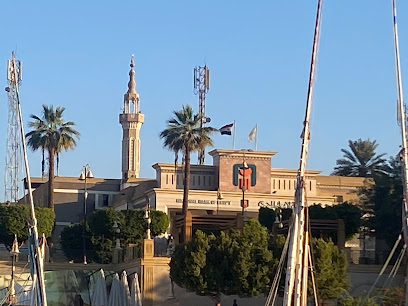
Mortuary Temple of Seti I
3.4 km
Discover the exquisite artistry and historical significance of the Mortuary Temple of Seti I in Luxor, an essential stop for every traveler exploring ancient Egypt.
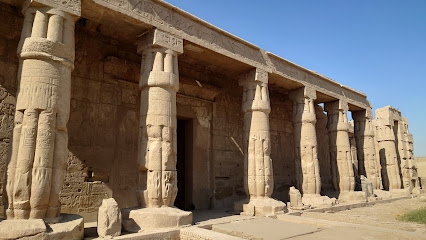
Colossus of Memnon on the West Bank
3.5 km
Explore the Colossus of Memnon in Luxor, an iconic symbol of ancient Egypt, showcasing remarkable artistry and rich historical significance.
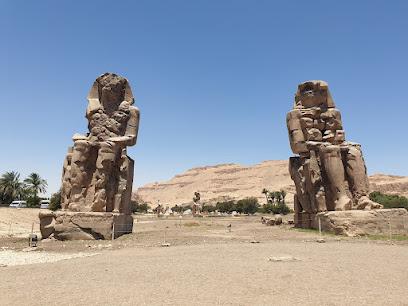
Cimitero (necropoli) El-Khokha
3.9 km
Uncover the rich history and artistry of ancient Egypt at El-Khokha Necropolis, a captivating yet lesser-known treasure in Luxor.

Unmissable attractions to see
Obelisk of Hatshepsut
0.0 km
Discover the Obelisk of Hatshepsut in Karnak, Luxor - a magnificent tribute to ancient Egypt's artistry and history.
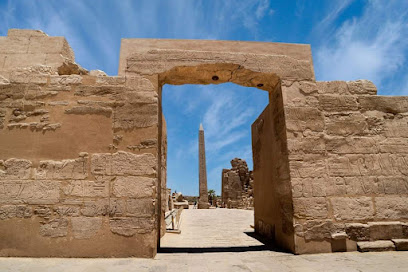
Pillar Hall in Karnak Temple
0.0 km
Explore the monumental Pillar Hall in Karnak Temple, Luxor—an architectural wonder showcasing ancient Egyptian artistry and history.
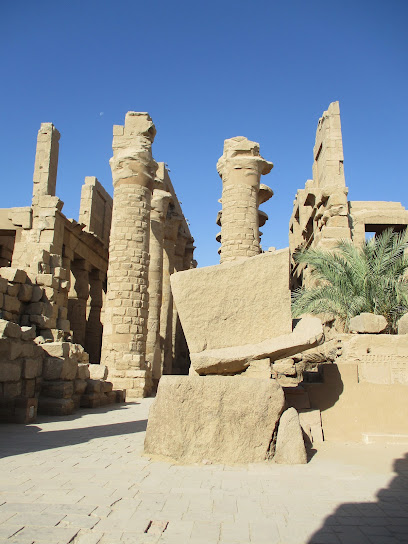
Hypostyle Hall
0.1 km
Explore the breathtaking Hypostyle Hall in Luxor, a historical landmark showcasing ancient Egyptian architecture and artistry.
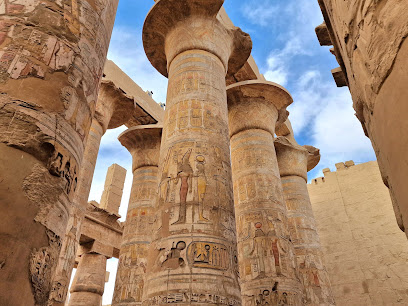
Precinct of Amun-Re
0.1 km
Explore the grandeur of the Precinct of Amun-Re, a UNESCO World Heritage site in Luxor, where ancient Egyptian history and spirituality come to life.
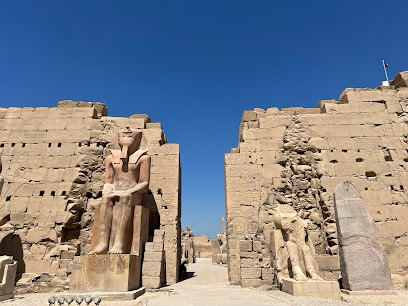
Karnak, Egypte
0.1 km
Explore the awe-inspiring Karnak Temple in Luxor, Egypt - a monumental symbol of ancient Egyptian civilization and architecture.

Karnak
0.1 km
Experience the grandeur of Karnak, an ancient temple complex in Luxor that showcases the rich history and culture of Egypt's remarkable civilization.
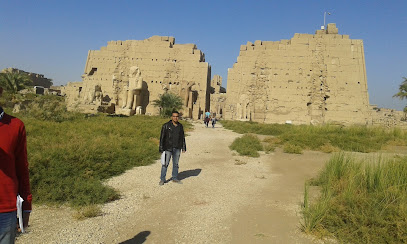
Ramesses III Temple
0.1 km
Discover the Temple of Ramesses III in Luxor, a stunning ancient structure showcasing the grandeur of Egypt's architectural and cultural heritage.
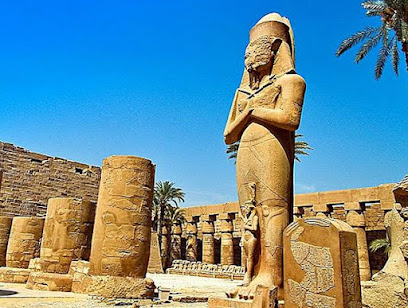
Temple of Thutmose III
0.1 km
Discover the grandeur of the Temple of Thutmose III in Karnak, a historical landmark showcasing the splendor of ancient Egyptian civilization.
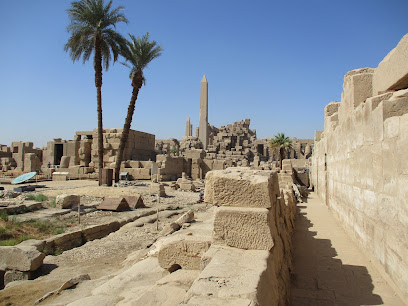
First Pylon
0.2 km
Explore the grandeur of the First Pylon, a monumental gateway to the Temple of Karnak in Luxor, Egypt, showcasing ancient Egyptian history and architecture.
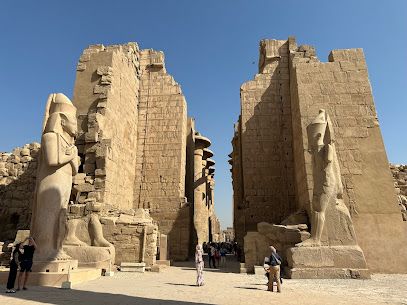
Temple of Ramesses II
0.2 km
Explore the grandeur of the Temple of Ramesses II, a majestic historical landmark in Luxor that showcases the glory of Ancient Egypt.
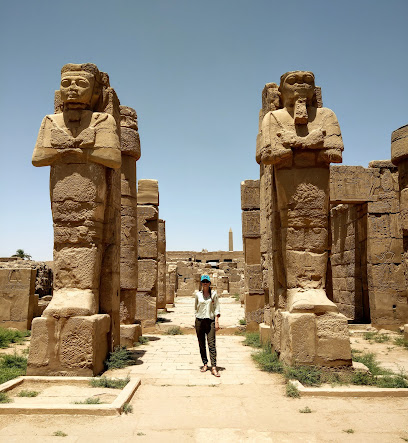
Avenue of the Rams
0.2 km
Explore the Avenue of the Rams in Luxor, a historical landmark lined with majestic sphinxes leading to the grand Karnak Temple, rich in ancient Egyptian culture.

Karnak Open-air Museum
0.2 km
Discover the grandeur of Karnak Open-air Museum, a monumental testament to ancient Egyptian civilization, located in the heart of Luxor.
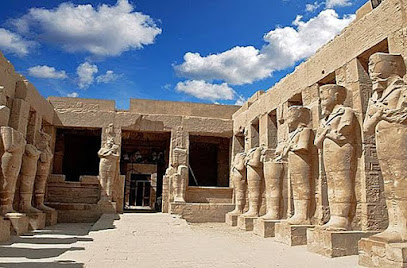
Chapel of Osiris
0.3 km
Discover the Chapel of Osiris in Luxor, Egypt - a stunning historical landmark showcasing ancient Egyptian art and spirituality.
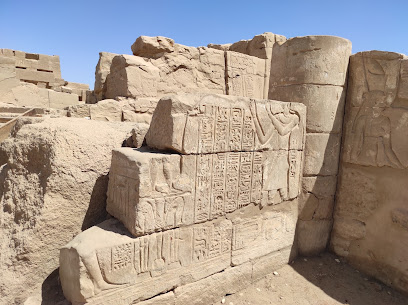
Temple Of Khonsu
0.3 km
Explore the Temple of Khonsu, a hidden gem in Luxor, showcasing ancient Egyptian architecture and rich cultural heritage.
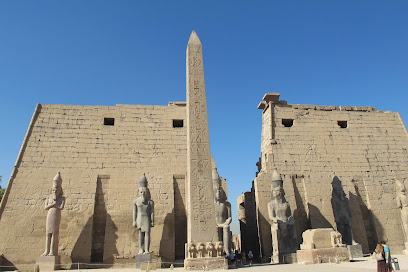
Gateway of Ptolemy III Euergetes
0.4 km
Discover the grandeur of the Gateway of Ptolemy III Euergetes, a monumental testament to ancient Egyptian architecture and history in Karnak, Luxor.
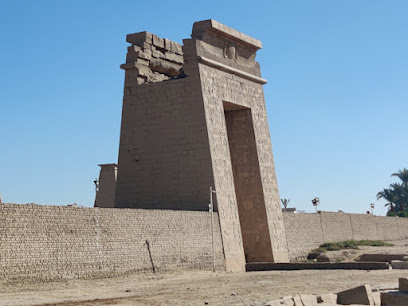
Essential places to dine
El Tawab Restaurant & Coffee Shop
0.6 km
Discover El Tawab Restaurant & Coffee Shop near Karnak Temple Square - where authentic Egyptian flavors meet inviting ambiance.
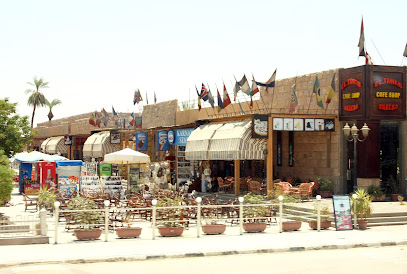
Caribbean
0.6 km
Discover authentic Caribbean cuisine in Luxor; a flavorful journey awaits with vibrant dishes and welcoming hospitality.

White Coffee & Restaraunt
0.6 km
Discover delicious Arab cuisine at White Coffee & Restaurant in Karnak, Luxor – where tradition meets modern comfort.
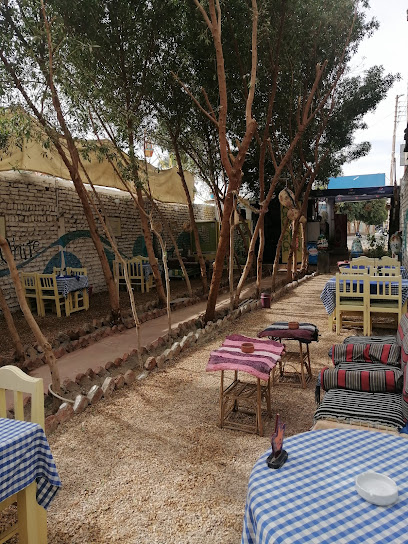
بيت ورد. Bayt ward
0.7 km
Discover Bayt Ward in Luxor: A Barbecue Haven Offering Authentic Flavors and Inviting Atmosphere.
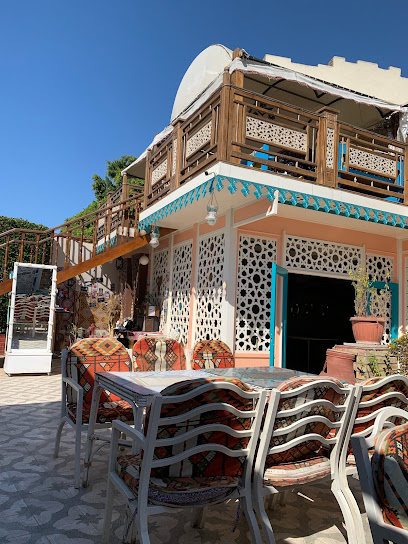
Beyt Ward Restaurant and cafe shop
0.7 km
Discover authentic Egyptian flavors at Beyt Ward Restaurant in Luxor's Karnak district - where tradition meets taste in every bite.
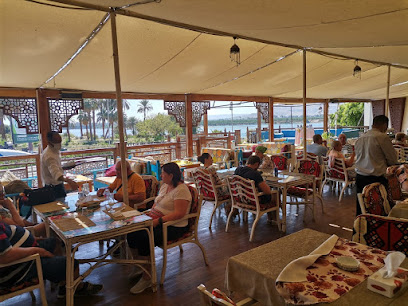
مطعم النيل السياحى - Nile Restaurant Luxor
0.7 km
Experience authentic Egyptian cuisine with stunning views at Nile Restaurant Luxor – where every meal is a memorable adventure.

El Hussein Restaurant
1.0 km
Experience authentic Egyptian cuisine at El Hussein Restaurant in Luxor, where traditional flavors meet modern dining.
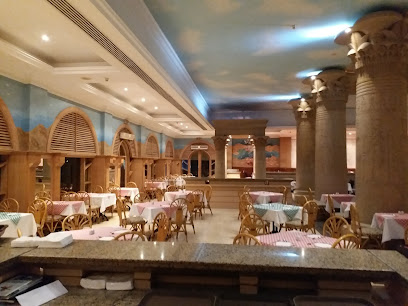
Silk Road
1.3 km
Discover the essence of Asian cuisine at Silk Road in Luxor—a culinary journey reflecting history and flavor.
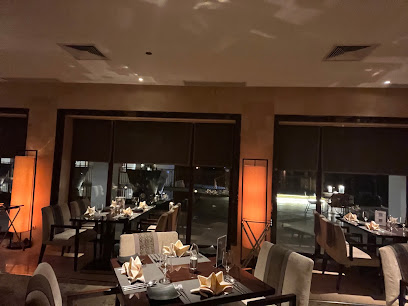
Rosetta
1.3 km
Experience the rich flavors of Egyptian cuisine at Rosetta Buffet in Karnak, Luxor - where every meal is a celebration.
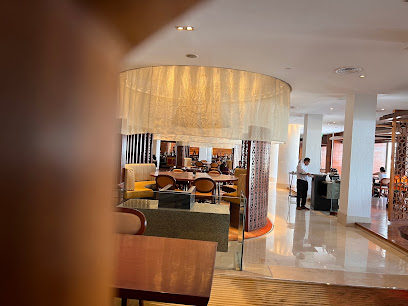
Olives
1.3 km
Experience exquisite Egyptian cuisine at Olives in Karnak, Luxor – where fine dining meets rich cultural heritage.
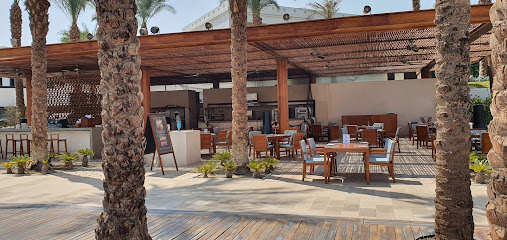
Casablanca Restaurant
1.8 km
Experience authentic Egyptian cuisine at Casablanca Restaurant in Luxor - where tradition meets taste.

Kaya Restoz
1.8 km
Discover Kaya Restoz in Luxor: where Native American flavors meet Egyptian hospitality along the Nile.

Oasis Palace
2.1 km
Experience exquisite flavors at Oasis Palace in Luxor – where traditional Egyptian cuisine meets modern dining.

مطعم الميناء Almina Restaurant
2.1 km
Experience exquisite dining at Almina Restaurant: where Japanese Izakaya meets fast food in the heart of Luxor.

Al Sahaby Lane Restaurant
2.5 km
Experience authentic Egyptian cuisine at Al Sahaby Lane Restaurant in Luxor – where tradition meets taste.
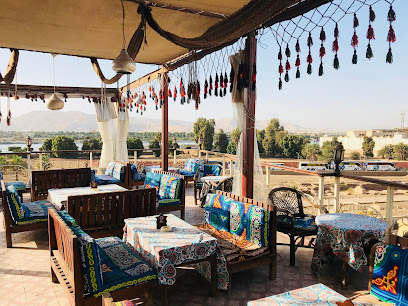
Markets, malls and hidden boutiques
Cleopatra Perfume Oils Palace
0.3 km
Explore the luxurious world of handcrafted perfume oils at Cleopatra Perfume Oils Palace in Luxor, where ancient traditions meet modern elegance.

New Karnak Papyrus Instute
0.4 km
Explore Egypt's rich heritage at the New Karnak Papyrus Institute, where ancient craftsmanship meets modern artistry in Luxor.
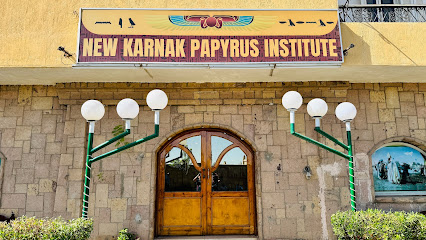
New Isis papyrus museum
0.6 km
Explore the New Isis Papyrus Museum in Luxor, a captivating journey through ancient Egyptian art and culture showcasing exquisite papyrus artifacts.
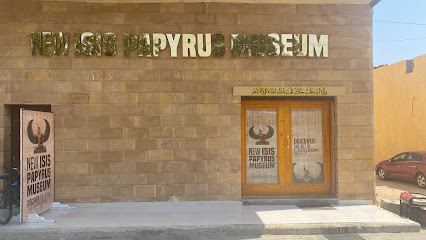
محلات الحاج عبده للملابس والمفروشات الجاهزة
0.6 km
Explore المحلات الحاج عبده for exquisite clothing and home textiles in the heart of Luxor, where tradition meets modern elegance.

Anubis shop for souvenirs
0.6 km
Explore Anubis Shop for Souvenirs in Luxor for authentic Egyptian treasures and unique gifts to cherish your travel memories.
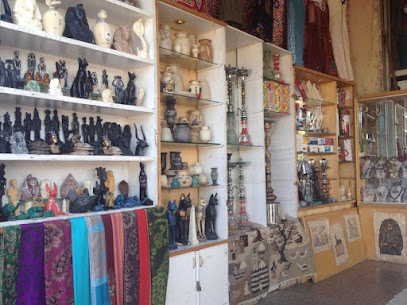
Hamees Papyrus
0.6 km
Explore Hamees Papyrus in Luxor for unique souvenirs that capture the essence of Egypt's rich cultural heritage and artistry.
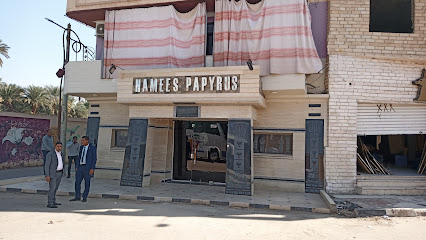
World Famous Bazaar
0.7 km
Explore Luxor's World Famous Bazaar, a vibrant gift shop offering authentic Egyptian treasures and a unique cultural experience.
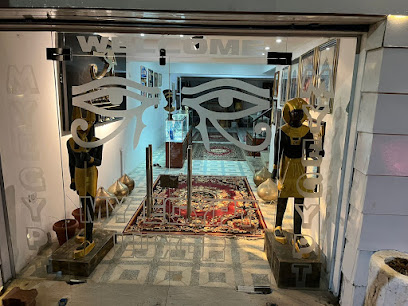
Merit Aton
0.7 km
Explore the rich heritage of Egypt at Merit Aton, the ultimate antique store in Luxor, showcasing timeless treasures and unique artifacts.
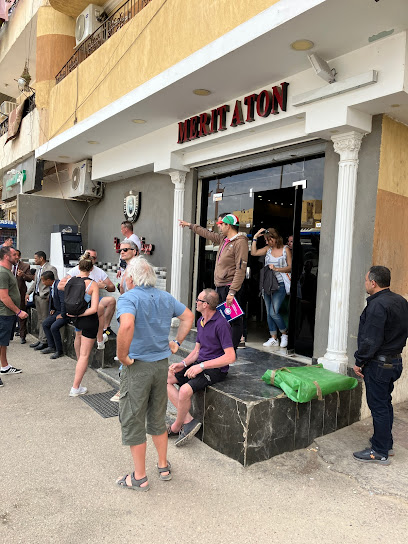
Old Shop
1.2 km
Explore Old Shop in Luxor's Karnak for unique jewelry, antiques, and handcrafted treasures that reflect Egypt's rich heritage.

أبو وحيد للإستيراد والتصدير
2.0 km
Explore Abu Wahid, Luxor's premier souvenir store, for authentic Egyptian crafts and unforgettable shopping experiences.
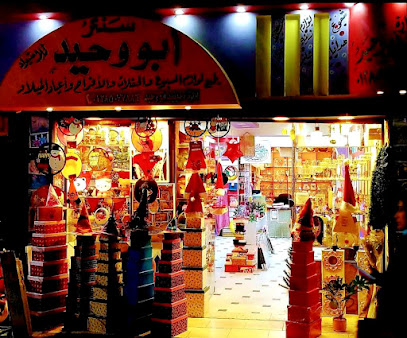
Hassle Free Shop
2.2 km
Explore the enchanting Hassle Free Shop in Luxor, the perfect destination for unique books, antiques, and souvenirs reflecting Egyptian culture.
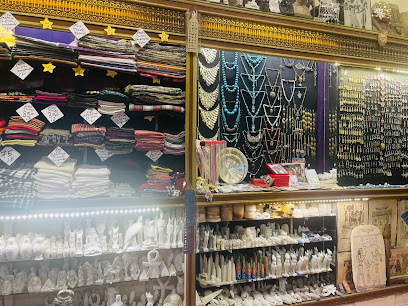
El Fashny Shop - متجر الفشني
2.5 km
Discover unique Egyptian gifts and souvenirs at El Fashny Shop in Luxor, where tradition meets artistry in a charming shopping experience.

Old Market House Egyption Gift
2.6 km
Explore the Old Market House Egyptian Gift in Luxor for authentic antiques and unique souvenirs, celebrating Egypt's rich cultural heritage.

Lotus Bazar
2.6 km
Explore Lotus Bazar in Luxor for unique fashion accessories, exquisite jewelry, and enchanting perfumes that embody the essence of Egyptian craftsmanship.

Tienda de recuerdos
2.6 km
Discover authentic Egyptian souvenirs at Tienda de Recuerdos in Luxor, a vibrant store filled with handcrafted treasures that embody the spirit of Egypt.

Essential bars & hidden hideouts
Arabi Paradise
0.6 km
Experience the authentic flavors of Egypt at Arabi Paradise, a culinary gem in Luxor that delights every palate.
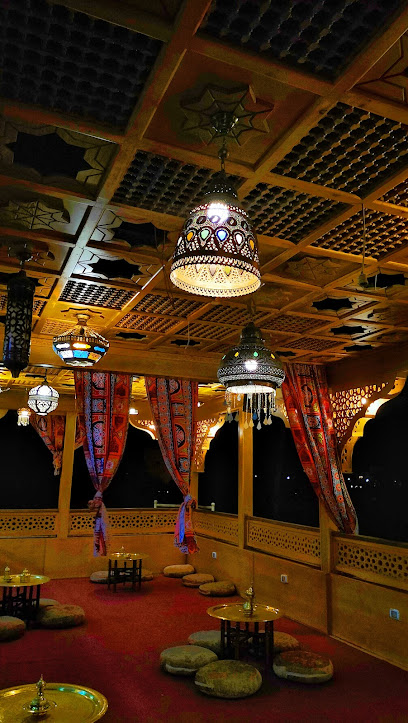
Bar & Byke Rent, West Luxor
2.4 km
Discover the perfect blend of relaxation and adventure at Bar & Byke Rent in Luxor, featuring refreshing drinks and bike rentals for exploring ancient wonders.

Wine palace
2.6 km
Discover the enchanting Wine Palace in Luxor, where local flavors and a vibrant atmosphere meet for a memorable evening.
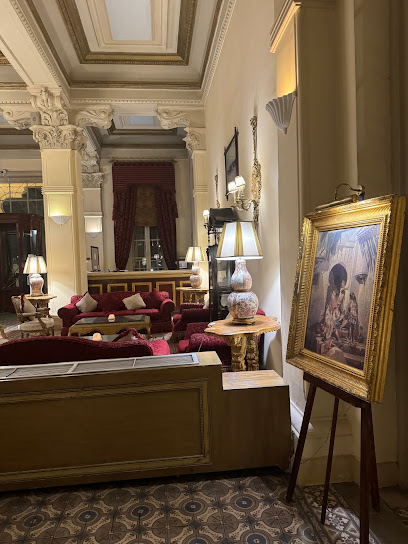
حسني لطيف سلامة
2.6 km
Experience the vibrant nightlife of Luxor at حسني لطيف سلامة, where local charm meets refreshing drinks in a lively atmosphere.

انتيكةAntika
2.8 km
Discover Antika, Luxor's vibrant cocktail bar, where exquisite drinks and lively ambiance create unforgettable moments.

Snack Time
2.8 km
Experience the vibrant flavors of Egypt at Snack Time, your go-to spot for authentic cuisine and delicious pizza delivery in Luxor.

Royal Bar
3.2 km
Experience the vibrant ambiance of the Royal Bar in Luxor, where exquisite drinks meet stunning Nile views for an unforgettable evening.

G.old
3.3 km
Experience vibrant nightlife at G.old, a premier bar in Luxor, Egypt, offering an extensive drink selection and a lively atmosphere.
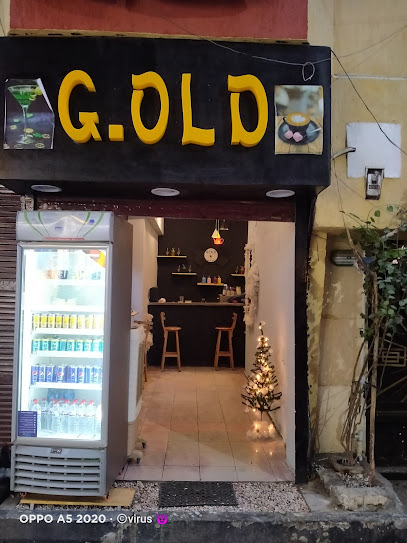
مصطفى تاكس
4.1 km
Discover the vibrant nightlife at مصطفى تاكس, a lively bar in Luxor offering refreshing drinks and a welcoming atmosphere for travelers.

SunRise Bar & Restaurant Luxor
4.3 km
Experience the vibrant flavors of Egyptian and international cuisine at SunRise Bar & Restaurant in Luxor, where delightful dishes meet lively entertainment.
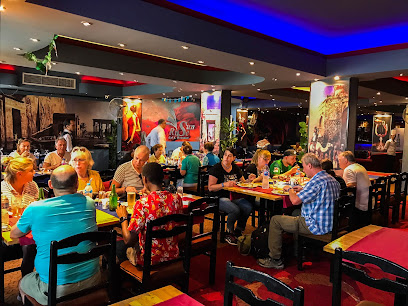
The King's Head Pub
4.3 km
Experience the vibrant local culture at The King's Head Pub, the perfect spot for relaxation and traditional Egyptian hospitality in Luxor.

ميرفيس الأيرلندية بار Murphys Irish Bar
4.3 km
Discover the heart of Irish culture at Murphys Irish Bar in Luxor, where tradition meets vibrant entertainment and delightful cuisine.
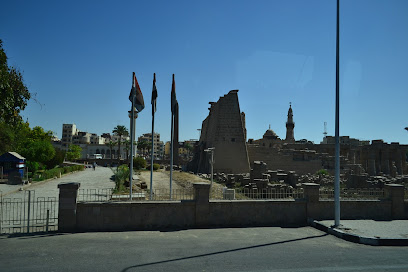
Nile Bar & Lounge
4.4 km
Experience the elegance of Nile Bar & Lounge in Luxor, where exquisite cocktails meet breathtaking views of the Nile River.

Maxime's El Saltana café
4.7 km
Discover Maxime's El Saltana Café in Luxor – where tradition meets flavor in a cozy ambiance perfect for every traveler.
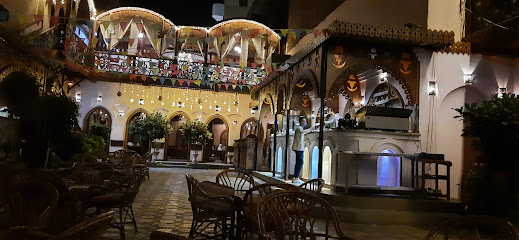
Sukkareya Lobby Bar
5.0 km
Discover the vibrant atmosphere of Sukkareya Lobby Bar in Luxor, where local flavors meet exceptional service for a memorable experience.
